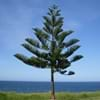Life Span
Perennial
Annual or Biennial
Type
Tree
Flowering Plants
Origin
China
Northeastern United States, North-Central United States, Canada
Types
Not Available
Not Available
Habitat
Fields, Forest edges, Grassland, Roadsides
Dry areas, Rocky areas
USDA Hardiness Zone
4-8
2-7
Sunset Zone
Not Available
21,22
Habit
Arching/Fountain-shaped
Clump-Forming
Flower Color
Yellow green, Light Green
Yellow, Pink
Flower Color Modifier
Bicolor
Bicolor
Fruit Color
Pink, Light Green, Sienna
Non Fruiting Plant
Leaf Color in Spring
Green
Blue Green
Leaf Color in Summer
Dark Green
Blue Green
Leaf Color in Fall
Dark Green
Blue Green
Leaf Color in Winter
Not Available
Light Green
Leaf Shape
Heart-shaped
Pinnate
Plant Season
Spring, Summer
Summer, Fall
Sunlight
Full Sun, Partial Sun, Partial shade
Full Sun, Partial Sun
Type of Soil
Clay, Loam, Sand
Loam, Sand
The pH of Soil
Acidic, Neutral, Alkaline
Acidic, Neutral, Alkaline
Soil Drainage
Average
Well drained
Bloom Time
Spring, Late Spring, Early Summer, Summer
Early Summer, Summer, Late Summer, Early Fall
Tolerances
Pollution, Drought, Salt, Soil Compaction
Not Available
Where to Plant?
Ground
Container, Ground
How to Plant?
Seedlings
Seedlings
Plant Maintenance
Medium
Medium
Watering Requirements
Average Water Needs, Do Not over Water
Do Not over Water, Keep ground moist, Never Over-water, Requires regular watering
In Summer
Drought Tolerant, Average Water
Lots of watering
In Spring
Drought Tolerant, Average Water
Moderate
In Winter
Drought Tolerant, Average Water
Average Water
Soil pH
Acidic, Neutral, Alkaline
Acidic, Neutral, Alkaline
Soil Type
Clay, Loam, Sand
Loam, Sand
Soil Drainage Capacity
Average
Well drained
Sun Exposure
Full Sun, Partial Sun, Partial shade
Full Sun, Partial Sun
Pruning
Prune in late summer or fall, Prune in late winter, Remove damaged leaves, Remove dead branches, Remove dead leaves
Remove damaged leaves, Remove dead leaves
Fertilizers
All-Purpose Liquid Fertilizer
fertilize in early summer, fertilize in growing season, fertilize in spring
Pests and Diseases
Red blotch, Spotted Lanterfly
Insects
Plant Tolerance
Drought, Variety of soil types
Drought
Flowers
Insignificant
Showy
Flower Petal Number
Single
Single
Fragrant Bark/Stem
Yes
No
Foliage Texture
Coarse
Fine
Foliage Sheen
Matte
Matte
Attracts
Birds
Butterflies, Insects
Allergy
allergic reaction, Skin irritation
Corydalis
Aesthetic Uses
Beautification, Showy Purposes
Beautification, Showy Purposes
Beauty Benefits
No Beauty Benefits
Not Available
Environmental Uses
Air purification
Air purification, Food for insects
Medicinal Uses
Anthelmintic, Antispasmodic, Asthma, Astringent
Sedative
Part of Plant Used
Bark, Root
Flowers
Other Uses
Used as Ornamental plant, Used for its medicinal properties, Used for woodware
Decoration Purposes, Showy Purposes, Used as Ornamental plant
Used As Indoor Plant
No
No
Used As Outdoor Plant
Yes
Yes
Garden Design
Shade Trees, Street Trees
Mixed Border, Rock Garden / Wall, Wildflower
Botanical Name
AILANTHUS altissima
CORYDALIS sempervirens
Common Name
Tree-of-Heaven
Colic Weed, Pale Fumewort, Pale Corydalis
In Hindi
कल्पवृक्ष
Capnoides
In German
Baum des Himmels
Capnoides
In French
Arbre de paradis
capnoides
In Spanish
Arbol del Cielo
Capnoides
In Greek
Δέντρο του Ουρανού
Capnoides
In Portuguese
Árvore do céu
Capnoides
In Polish
Drzewo Nieba
Capnoides
In Latin
Lignum de caelo
capnoides
Phylum
Magnoliophyta
Basidiomycota
Class
Magnoliopsida
Agaricomycetes
Order
Sapindales
Agaricales
Family
Simaroubaceae
Fumariaceae
Genus
Ailanthus
Hypholoma
Clade
Angiosperms, Eudicots, Rosids
Angiosperms, Eudicots
Tribe
Not Available
Fumarieae
Subfamily
Not Available
Fumarioideae
Number of Species
Not Available
Season and Care of Tree-of-Heaven and Capnoides
Season and care of Tree-of-Heaven and Capnoides is important to know. While considering everything about Tree-of-Heaven and Capnoides Care, growing season is an essential factor. Tree-of-Heaven season is Spring and Summer and Capnoides season is Spring and Summer. The type of soil for Tree-of-Heaven is Clay, Loam, Sand and for Capnoides is Loam, Sand while the PH of soil for Tree-of-Heaven is Acidic, Neutral, Alkaline and for Capnoides is Acidic, Neutral, Alkaline.
Tree-of-Heaven and Capnoides Physical Information
Tree-of-Heaven and Capnoides physical information is very important for comparison. Tree-of-Heaven height is 1,220.00 cm and width 1,070.00 cm whereas Capnoides height is 30.50 cm and width 20.30 cm. The color specification of Tree-of-Heaven and Capnoides are as follows:
Tree-of-Heaven flower color: Yellow green and Light Green
Tree-of-Heaven leaf color: Green
Capnoides flower color: Yellow and Pink
- Capnoides leaf color: Blue Green
Care of Tree-of-Heaven and Capnoides
Care of Tree-of-Heaven and Capnoides include pruning, fertilizers, watering etc. Tree-of-Heaven pruning is done Prune in late summer or fall, Prune in late winter, Remove damaged leaves, Remove dead branches and Remove dead leaves and Capnoides pruning is done Remove damaged leaves and Remove dead leaves. In summer Tree-of-Heaven needs Drought Tolerant, Average Water and in winter, it needs Drought Tolerant, Average Water. Whereas, in summer Capnoides needs Lots of watering and in winter, it needs Average Water.





